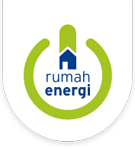The inauguration of biogas demo plot within the framework of the Productive Economic Zone Development Program through Energy Conservation and Sustainable Agriculture took place on July 17, 2019 in Sumber Harjo Village, Moilong Sub-district, Banggai Regency, Central Sulawesi. The program is organized by the collaboration of the Joint Operating Body Pertamina-Medco E&P Tomori Sulawesi (JOB Tomori) and Yayasan Rumah Energi (YRE) supported by the Banggai Regency Government.
The specific target area of the program is in Sumber Harjo Village and Slamet Harjo Village. The ceremony was attended by various parties, including related agencies at the district level, village government, PPL (Agricultural Extension Workers), farmer groups, and the public.
“We strongly support this program at the community level, because it brings great hope about the development of agricultural activities and management of organic fertilizers, especially those which are produced from biogas,” said Fahmi Arifudin Rizal, SSTP as Moilong Sub-District Head in his opening speech.

In line with this statement, Hasanudin Idris, Expert Staff for Public Services and Social Engineering from the Banggai District Government, in his speech also said that the government supports this community empowerment program through the implementation of biogas technology which expectably will be sustainable in the future.
After the opening ceremony, the invitees and participants of the event had the opportunity to visit the location of the biogas plot demonstration in the two target villages. Not only the existence of biogas installations can be directly seen in the application of alternative energy, but also the existence of integrated supporting demo plots. For example, demo plots of bio-surry-based fertilizer, worm farmings, and freshwater fish farming. All these supporting demo plot demo were built aiming to introduce the development of bio-slurry-based businesses.
After the opening ceremony, the invitees and participants of the event had the opportunity to visit the location of the biogas plot demonstration in the two target villages. Not only the existence of biogas installations can be directly seen in the application of alternative energy, but also the existence of integrated supporting demo plots. For example, demo plots of bio-surry-based fertilizer, worm farmings, and freshwater fish farming. All these supporting demo plot demo were built aiming to introduce the development of bio-slurry-based businesses.

Iwan Sutrisno, Field Senior Manager of JOB Tomori said, “This program is motivated by the potential of agricultural areas in two villages. In addition, the existence of this program can help overcome the management of cattle which often become a problem when the cattle disrupt the agricultural land and when the animal waste has not utilized.”
At the policy level, this program is present to support regional regulations regarding cattle management, especially related to the handling and placement of livestock so that they are well managed by the community and become a strategic effort in initiating productive program. Based on these matters, this program is focused on managing the potential of organic waste (in this case cattle manure) through biogas technology, development of organic fertilizers and bio-slurry-based derivative products.
Twenty units of 4 m3 household scale biogas reactors were present as physical infrastructure in two villages. Since biogas has been used by beneficiaries, biogas users are now optimally utilizing the energy produced from biogas and to process the bio-slurry. Energy from biogas can be used as cooking fuel for 3-4 hours per day and produce lighting energy by using biogas lamp.

On the other hand, bio-slurry has now also been used mainly as organic fertilizer which is applied to the yard and paddy fields. Every day the biogas reactor can produce 30 liters of bio-slurry. Bio-slurry can also be processed into a solid fertilizer that is rich in organic matter, full of nutrients, and contains probiotic microbes, and is very useful as a soil conditioner because it contains 1020% humic acid. The advantages of bio-slurry are expected to help beneficiaries and other farmers improve their agricultural productivity.
The use of bio-slurry is also encouraged through freshwater fish farming and worm farming. Bio-slurry is processed into fish feed and worm feed which will create alternative economic opportunities other than farm products to improve household economics. Regarding worm farming, another advantage that can be obtained is its economic value as vermicompost.
“The application of biogas technology is expected to be a comprehensive effort in developing agricultural, plantation, fishery and livestock activities. Efforts are made by embracing support and cooperation with various parties to make two villages as productive economic zones. In addition, employment will also be created for the development of the biogas sector locally, especially for biogas installation builders who have expertise and competence in their fields,” said Rebekka S. Angelyn, Executive Director of YRE.

From the activities that have been carried out, this program will continue to work towards the goal in achieving sustainability. Realized by making two villages as centers of organic agricultural products and supported by the existence of Biogas Learning Center or biogas-based integrated organic farming learning center which is independently managed by the local community.

